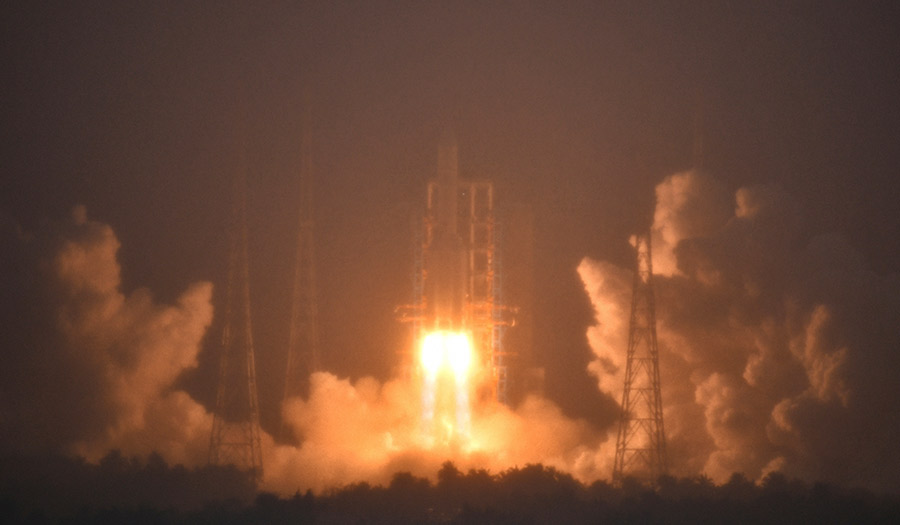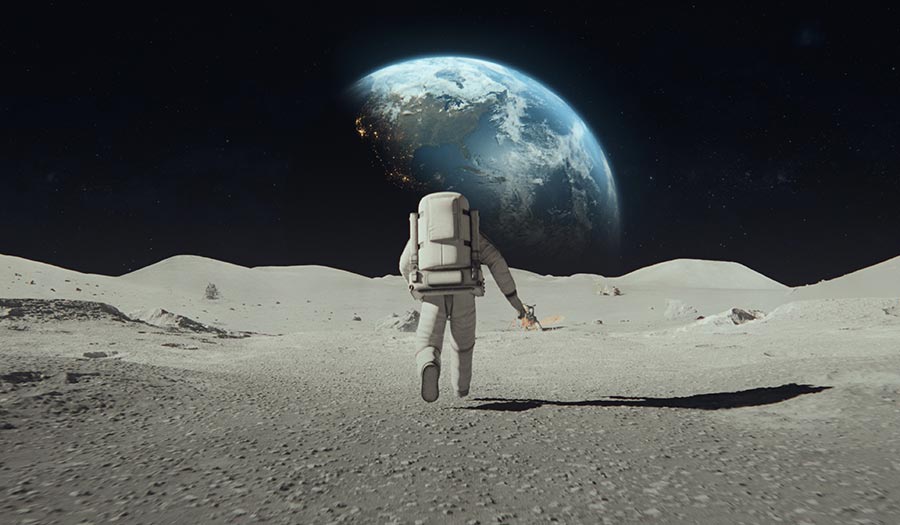 Guo Cheng/Xinhua via AP
Guo Cheng/Xinhua via AP
World News Desk
Learn the why behind the headlines.
Subscribe to the Real Truth for FREE news and analysis.
Subscribe NowTAIPEI, Taiwan (AP) – China on Friday launched a lunar probe to land on the far side of the moon and return with samples that could provide insights into differences between the less-explored region and the better-known near side.
It is the latest advance in China’s increasingly sophisticated space exploration program, which is now competing with the U.S., still the leader in space.
China also has a three-member crew on its own orbiting space station and aims to put astronauts on the moon by 2030. Three Chinese lunar probe missions are planned over the next four years.
Free from exposure to Earth and other interference, the moon’s somewhat mysterious far side is ideal for radio astronomy and other scientific work. Because the far side never faces Earth, a relay satellite is needed to maintain communications.
The rocket carrying the Chang’e-6 lunar probe—named after the Chinese mythical moon goddess—lifted off Friday at 5:27 p.m. as planned from the Wenchang launch center on the island province of Hainan. About 35 minutes later it separated entirely from the massive Long March-5 rocket—China’s largest—that had slung it into space, as technicians monitoring the launch from ground control smiled and applauded.
Shortly afterward, launch mission commander Zhang Zuosheng took to a podium at the front of the room and said the launch had gone off exactly as planned and the spacecraft was on its set trajectory. “I declare this launch mission a complete success,” Mr. Zhang said to further applause.
The Philippine Space Agency issued a statement saying expected debris from the rocket launch was “projected to have fallen within the identified drop zones.”
China in 2021 was forced to defend its handling of a rocket booster that burned up over the Indian Ocean after the administrator of the American space agency and others accused Beijing of acting recklessly by allowing its rocket to fall to Earth seemingly uncontrolled after the mission.
Huge numbers of people crowded Hainan’s beaches to view the launch, which comes in the middle of China’s five-day May Day holiday. As with previous recent launches, the event was televised live by state broadcaster CCTV.
After orbiting the moon to reduce speed, the lander will separate from the spacecraft and within 48 hours of setting down it will begin drilling into the lunar surface and scooping up samples with its robotic arm. With the samples sealed in a container, it will then reconnect with the returner for the trip back to Earth. The entire mission is set to last 53 days.
China in 2020 returned samples from the moon’s near side, the first time anyone had done so since the former Soviet Union in 1976. Analysis of the samples found they contained water in tiny beads embedded in lunar dirt.
Also in the past week, three Chinese astronauts returned home from a six-month mission on the country’s orbiting space station after the arrival of its replacement crew.
China built its own space station after being excluded from the International Space Station, largely because of U.S. concerns over the Chinese military’s total control of the space program amid a sharpening competition in technology between the two geopolitical rivals. U.S. law bars almost all cooperation between the U.S. and Chinese space programs without explicit congressional approval.
Faced with such limitations, China has expanded cooperation with other countries and agencies. The latest mission carries scientific instruments from France, Italy and the European Space Agency in cooperation with Sweden. A small Pakistani satellite is also on board.
China’s ambitious space program aims to put astronauts on the moon by 2030, as well as bring back samples from Mars around the same year and launch three lunar probe missions over the next four years. The next is scheduled for 2027.
Longer-term plans call for a permanent crewed base on the lunar surface, although those appear to remain in the conceptual phase.
China conducted its first crewed space mission in 2003, becoming the third country after the former Soviet Union and the U.S. to put a person into space using its own resources.
The three-module Tiangong, much smaller than the ISS, was launched in 2021 and completed 18 months later. It can accommodate up to six astronauts at a time and is mainly dedicated to scientific research. The crew will also install space debris protection equipment, carry out payload experiments and beam science classes to students on Earth.
China has also said that it eventually plans to offer access to its space station to foreign astronauts and space tourists. With the ISS nearing the end of its useful life, China could eventually be the only country or corporation to maintain a crewed station in orbit.
The U.S. space program is believed to still hold a significant edge over China’s due to its spending, supply chains and capabilities.
The U.S. aims to put astronauts back on the lunar surface by 2026 at the earliest. This time, though, NASA is partnering with private companies such as SpaceX and Blue Origin, which will provide the landers for the astronauts.
They plan to land on the moon’s south pole where permanently shadowed craters are believed to be packed with frozen water.
To learn more, read Who Will Conquer Space?
- Real Truth Magazine Articles
- SCIENCE & TECHNOLOGY
 Who Will Conquer Space?
Who Will Conquer Space?


